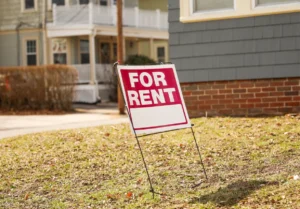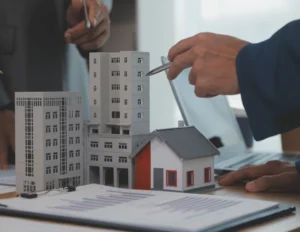How to Set a Rent Estimate
 As a landlord or property manager, it can feel daunting to determine an accurate rent estimate for your vacant property. It may seem tempting to charge the highest possible rent for an improved bottom line, but that can negatively impact your ability to attract and retain tenants.
As a landlord or property manager, it can feel daunting to determine an accurate rent estimate for your vacant property. It may seem tempting to charge the highest possible rent for an improved bottom line, but that can negatively impact your ability to attract and retain tenants.
Meanwhile, estimating rent too low can also harm you in the long run. What you need is an accurate way to figure out a rent estimate that reflects the current market and your property’s valuation.
Read on to discover exactly what you need to maximize net cash flow while also reducing high tenant turnover.
How can landlords determine an accurate rent estimate?
There are several factors that can influence your rental estimate, including comparable property prices, neighborhood, market rent conditions, and your property’s amenities and features. By taking each of these into consideration, you can determine an accurate rent estimate:
Comparable property prices
The easiest way to determine a ballpark estimate of your property’s rent is to take a look at what comparable properties are charging in your area. If you’re renting a three-bedroom, two-bathroom unit, take a look at what that type of property usually costs renters.
You can adjust that estimate range based on the following factors:
- Does the comparable unit have the same square footage?
- Does it have additional features or amenities?
- Are utilities included?
- How does the neighborhood compare to yours?
Neighborhood
Some neighborhoods will increase or decrease the value of your rental property based on location features. Being in a popular school district, near public transportation or shopping centers can all increase your rent estimate. Meanwhile, if your unit is located in a neighborhood with loud noise or is perceived as less safe, this will decrease your monthly rent estimate.
Market rent conditions
Keep an eye on current real estate market trends. If there is an influx of renters, that can create a higher demand for your rental property — ultimately increasing your rent estimate. You can also note the average size of similar properties near you to calculate the average market rent per square foot.
Property features and amenities
After figuring out the prices of comparable rental properties, you can adjust your own estimate to reflect your unit’s unique features and amenities. If you’re offering a property with a pool, large back or front yard, new appliances or free parking, your rent estimate should be increased to reflect these additional benefits.
Similarly, if a comparable unit has one of these amenities and your unit doesn’t, it may be smart to decrease your rent estimate to reflect this difference.
Use a rent calculator
If you’re interested in using a rent estimate calculator, you can access one at Rentometer, which will give you an instant, accurate rent amount. Simply fill in their form with your information as a real estate professional for your results.
Why is it important for landlords to determine an accurate rent estimate?
When it comes to calculating a fair rent estimate, there is a fine line between making a profit and preventing unnecessary vacancies in your rental unit. As a landlord, it always pays the most to ensure you’re renting to ideal tenants — those who will consistently pay on time and treat your property with respect. With AAOA’s tenant screening, you can help ensure that your renters are up to the task.
However, you also need to be able to attract these potential tenants. Renters want properties that they can afford, which means you’ll need to present a rent that accurately reflects the property value and current market trends.
When a landlord advertises a fair market rent, it reduces vacancy time, while increasing profits over time. If your unit is too expensive, you’ll end up losing cash flow. Meanwhile, if your property is too underpriced, you may get a renter that isn’t ideal for your unit. Finding the right balance is key to renting properties successfully.
What factors influence market rent trends?
A number of factors can influence market rent trends. Below are the top drivers that will impact your rental estimate:
- State of the economy
- Interest rates
- Demographics
- Government policies
It’s important to stay up to date with local and national real estate trends to ensure your property keeps up with current prices and rates.
Join AAOA today
Excited to find the right tenants for your property? AAOA provides industry-leading tenant screening services to help you make the most informed rental decisions.













 Accessibility
Accessibility